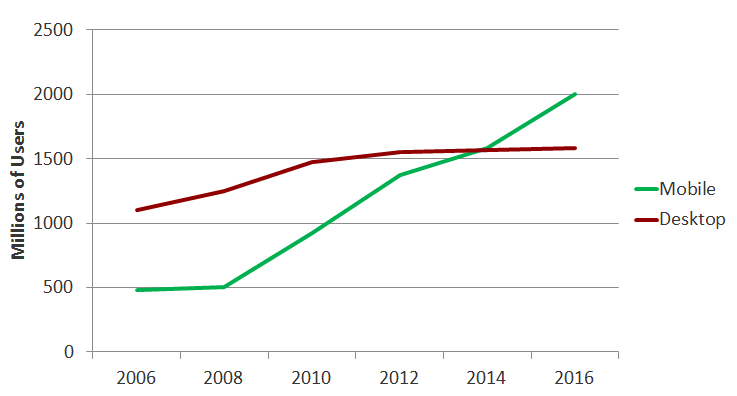4 Things That Big Healthcare IT Companies Must Do To Stay Competitive
The healthcare IT space is possibly the most exciting and dynamic industry in the United States right now. Healthcare is going through a total transformation driven by massive regulatory change, the “consumerization” of healthcare and the important shift from a system that manages sickness to a system that manages health. Underlying all of this change is the software that runs large healthcare organizations -- specifically, the big EMR systems. Given all of the rapid change in healthcare, the EMR industry -- and the dominant players that lead it -- are ripe for disruption. It's not unlikely that there'll be some big names dropping out of the race over the next several years.
With that in mind, here are 4 things I think the large EMR players should do to remain competitive amidst all of this change.
1. Move to the cloud. Healthcare IT is all about big data. And the large EMR companies host loads of it. In the traditional database space, Oracle and SAP waited much too long to move their data to the cloud. And it seems that some of the big EMR companies appear to be waiting too long as well (though, it's possible they could be making this transformation behind the scenes). Regardless, the fact is that health information is going to have to live on the cloud in the long-term. There is no way around this. Patients are going to demand interoperability of data between their primary care doctor and their gastroenterologist and their dermatologist and their dentist. And there is no way that all of those providers are going to be running the same EMR – the space is way too fragmented. I'd argue that not moving to the cloud is a bigger risk for EMR companies now than it was to the large database companies ten years ago. Patient advocates and regulators are simply not going to allow a big EMR vendor to keep their data in house. Larry Ellison said it took 7 years of development to get Oracle on the cloud. EMRs vendors can't continue to put this off.
2. Open up platform APIs (I mean, really open up platform APIs). I've used the BlackBerry versus Apple's iOS example in the past when discussing this topic. Apple opened up its app store early (effectively employing hundreds of thousands of app developers) and as a result made the iPhone 1,000 times more valuable. Meanwhile, BlackBerry dragged their feet and eventually ended up near bankruptcy. There are a number of reasons why the analogy isn't perfect (EMRs aren't consumer products, there are HIPAA restrictions around exposing personal health information, etc.) but EMRs should take a close look at what caused BlackBerry's demise. Part of the reason they dragged their feet on opening up was that their corporate customers were hesitant to allow their employees to download apps. They let their own customers slow down their development. Now some will tell you that the EMRs have created APIs and are adding services on top of their products all the time. This is not true. Even the most open EMRs are tightly policing the products that plug-in to their platform. The first EMR that takes a true "app store" approach will have a massive advantage. There are a ton of well-funded developers building amazing things that these EMRs can tap into if they open up.
3. Focus on usability. I'm not a doctor and I don't work in a doctor's office. But I've seen enough of these systems and I've heard enough complaints from users of them to know that the usability of most EMRs is not up to par with high quality B2B software tools. This is the classic case of B2B software being bad because it can. These companies have high talent sales teams that only need to sell a handful of executives and the rest of the health system is forced to use it and deal with the usability problems. With the emergence of B2E2B (business to employee to business) sales strategies a lot of this is changing. Staff members expect B2B software to work the same way their consumer tools work (Facebook, Gmail, Amazon, etc.). Granted, due to high switching costs, the big EMRs can get away with poor usability for a while -- it'll be a long time before EMR software is sold the way Yammer is sold but when big contracts come due in a few years, usability will be a massive competitive advantage.
4. Get out of the B2C business. Many big EMRs are rapidly creating direct to consumer products, mostly in the form of a patient portal. This is being driven by 1.) the belief that consumers will continue to be more and more engaged in their care and 2.) the government is requiring it as part of meaningful use; though it’s mostly being driven by the latter, which is a recipe for really weak consumer products. Take a look at the app store ratings of many of the big health IT apps – consumer expectations of what makes a good app are much too high for an enterprise-focused vendor to meet at this point. To compete in the consumer space you have to be totally focused on the consumer. It has to be an obsession. Take a look at a company like Oscar Health that has built their entire business around consumer experience. This isn’t a criticism of the EMRs, they do lots and lots of things really well. The point is that they should focus on those things and double down on them. Moving to the consumer space is too hard and too competitive and too much of a distraction. The better approach is to buy or partner with an organization that is built around the consumer.



